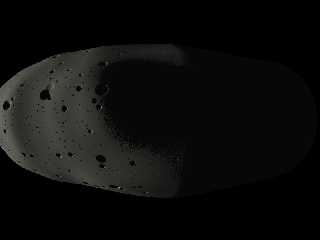|
 |
High!
Several days have passed, and I tried to improve the appearance of my
asteroidal moon, mostly be applying additional 3D noise to the surface
(in the case of the image attached here, by replacing the original
noise_3d(x, y, z) by noise_3d(pow(x, 3), pow(y, 3), pow(z, 3)), which in
fact added subtle waves to the terrain relief).
But still the problem is, that with the crackle pattern (with form set
to <n, 0, 0>), the craters are in fact "bubbles" of empty space
distributed randomly inside the raw isosurface moon body and not
necessarily cut in half by its surface, so that many craters still are
gaping holes rather than shallow depressions.
How can I get rid of this? Is there something like UV mapping for
isosurfaces which guarantees that only craters cut in half by the
surface are generated?
Is it possible to write a "core function" which, on the x-y plane,
generates a roughly symmetric (perhaps slightly turbulated)
cross-section of a crater, with terraced walls, a rim higher than the
surrounding terrain and even a central peak, which then is transferred
to a circular structure by applying trigonometric functions (?), which
in turn are distributed randomly (also with random variations in depth,
diameter, terracing and height of central peak) across the existing
asteroid surface?
Where can I find the mathematical resources to design such a function?
See you in Khyberspace!
Yadgar
Now playing: Pirates of Love (Zara)
Post a reply to this message
Attachments:
Download '2006-06-24 michatopia, moon .jpg' (20 KB)
Preview of image '2006-06-24 michatopia, moon .jpg'

|
 |




![]()